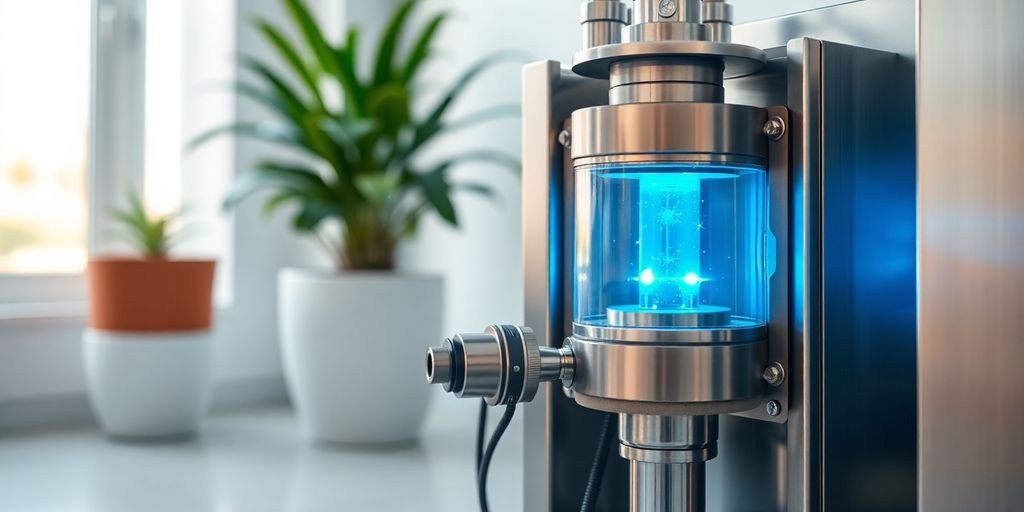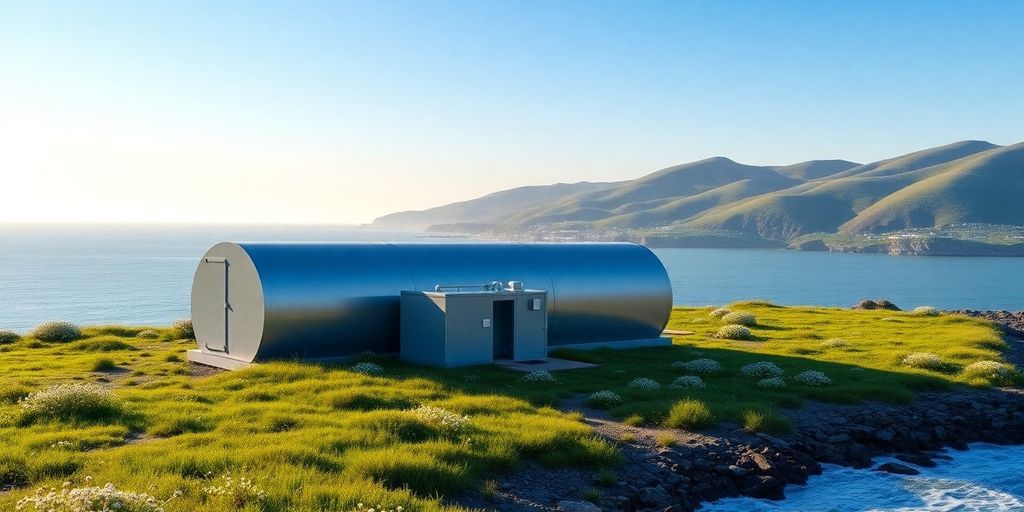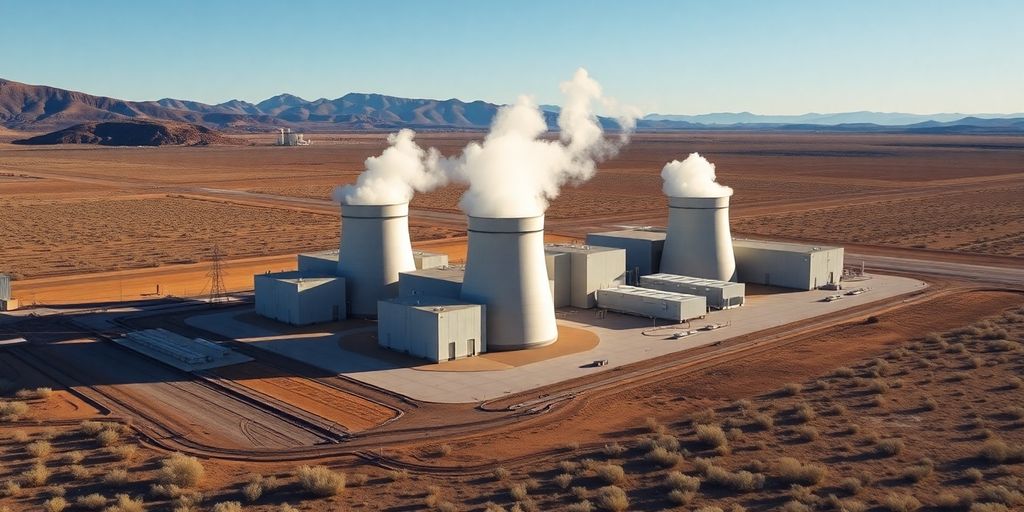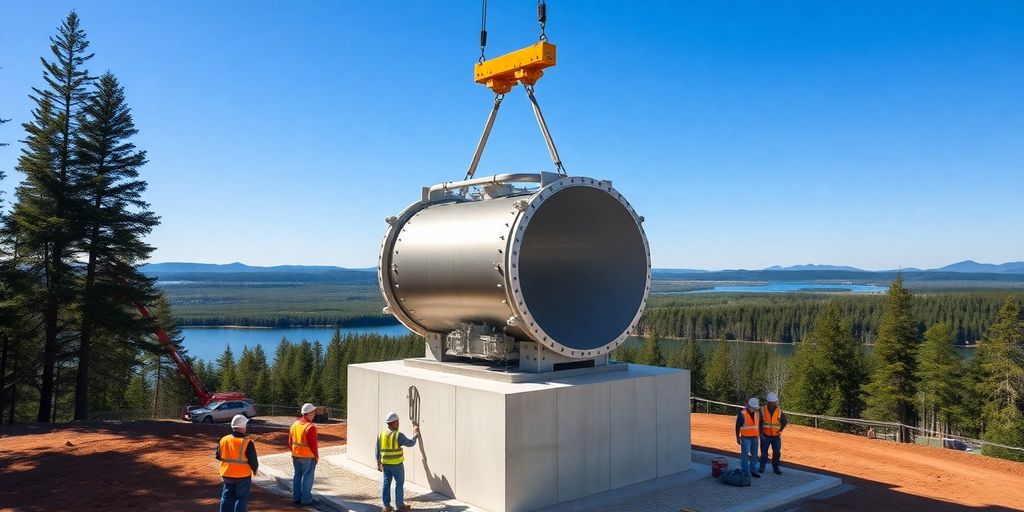Micro Reactors might sound like a sci-fi idea, but they’re moving into real life now. These compact power units can fit on a trailer, run for years without a big grid, and offer a fresh way to bring steady energy to places that need it. In this post, I look at how Micro Reactors have grown from early tests to new designs, where they could make a real difference, and what stands between them and the wider world. Expect a mix of tech talk, real cases, safety checks, and the money and rules that come with it. Let’s jump into this new era of small-scale nuclear power.
Key Takeaways
- Micro Reactors started as small test units but now use better materials and designs to boost output.
- Their modular build means quicker factory production and easier site setup.
- They can serve off-grid towns, factories, disaster sites, and even ships.
- Built-in safety features and underground options cut risk and shield local areas.
- They promise low carbon output and can team up with solar or batteries in local grids.
Evolution of Micro Reactors
The journey of micro reactors is pretty interesting, going from early ideas to what we’re seeing today. It’s not been a straight line, that’s for sure. There have been some real challenges along the way, but also some cool breakthroughs.
Early Prototype Testing
Early prototype testing was all about figuring out if the basic concept could even work. Think back to the US Army building reactors way back when. They were trying to power remote locations, like radar stations and bases in Greenland. These early tests showed that small reactors could actually provide power in tough conditions.
- PM1 powered a radar station for six years.
- PM-2A ran in Greenland for four years.
- PM-3A operated in Antarctica for ten years.
It’s easy to forget how experimental things were back then. They were pushing the limits of what was possible with nuclear technology, often in really harsh environments. It was a lot of trial and error, but it laid the groundwork for everything that came after.
Material Innovation Trends
Material science has played a huge role in making micro reactors better. We’re talking about finding materials that can withstand high temperatures, resist radiation damage, and last a long time. It’s not just about using what’s available; it’s about creating new materials specifically for these reactors. These advanced reactor projects are pushing the boundaries of material science.
Power Output Optimization
Getting the most power out of a small reactor is a big deal. It’s about making the design as efficient as possible. This means tweaking everything from the fuel used to the way the reactor is cooled. The goal is to get the most bang for your buck, so to speak. MARVEL, with its 85-kWth reactor capacity, is a good example of this in action.
| Factor | Impact on Power Output | Example |
|---|---|---|
| Fuel Type | Increases efficiency | Using enriched uranium |
| Cooling System | Prevents overheating | Liquid metal cooling |
| Reactor Design | Maximizes energy | Optimizing core geometry |
Technological Innovations in Micro Reactors
Micro reactors are really interesting because they’re not just smaller versions of big reactors. They use some pretty cool new tech to make them safer, more efficient, and easier to use. It’s not your grandpa’s nuclear power, that’s for sure.
Modular Fabrication Techniques
One of the biggest changes is how these things are built. Instead of constructing everything on-site, many micro reactors use modular fabrication. This means they build different parts in a factory and then put them together like LEGOs. This speeds up construction and lowers costs.
- Faster build times
- Better quality control
- Reduced on-site labor
Passive Safety Designs
Safety is a big deal, obviously. Micro reactors are designed with passive safety features. This means they rely on natural forces like gravity and convection to shut down the reactor in an emergency, without needing human intervention or electricity. It’s like having a built-in safety net that always works.
Advanced Fuel Concepts
New fuels are also making a difference. Instead of traditional uranium, some micro reactors use fuels like high-assay low-enriched uranium (HALEU) or even TRISO particles. These fuels are more efficient and can withstand higher temperatures, making the reactor safer and more powerful. The US unveils nuclear microreactor test bed to evaluate advanced fuels.
Digital Control Systems
Micro reactors use advanced digital control systems to monitor and manage the reactor’s operation. These systems can automatically adjust power output, detect potential problems, and even communicate with remote operators. It’s like having a smart thermostat for your nuclear reactor.
These digital systems allow for real-time monitoring and adjustments, optimizing performance and safety. They also enable remote operation, which is great for remote locations or situations where human access is limited.
Real-World Applications of Micro Reactors

Micro reactors, while still relatively new, are starting to pop up in some pretty interesting places. It’s not just theory anymore; we’re seeing these things get put to the test in actual, practical situations. The potential is huge, and it’s exciting to see where they might end up next. Let’s take a look at some of the areas where they’re making a difference.
Off-Grid Community Power
Imagine a remote village, far from any major power grid. Getting electricity there is a nightmare, right? That’s where micro reactors come in. They can provide a reliable, independent power source for these communities. No more relying on expensive diesel generators or waiting for a grid connection that might never happen. It’s about energy independence and a better quality of life. For example, the MARVEL project aims to improve integration with end-user applications and is described in the Research Reactors information page.
Industrial Heat Integration
Industries like manufacturing and chemical processing need a lot of heat. Traditionally, that heat comes from burning fossil fuels. Micro reactors can provide that heat in a much cleaner way. They can be integrated directly into industrial processes, reducing carbon emissions and improving efficiency. It’s a win-win for the environment and the bottom line.
Disaster Resilience Solutions
When disaster strikes, power grids often go down. Hospitals, emergency services, and shelters need a backup power source to keep running. Micro reactors can be deployed to provide that backup power, ensuring that critical services can continue to operate even in the worst conditions. They offer a level of resilience that traditional backup systems just can’t match.
Maritime Power Platforms
Think about large ships, research vessels, or even offshore platforms. They all need a lot of power, and they need it reliably. Micro reactors could be used to power these platforms, reducing their reliance on fossil fuels and improving their operational capabilities. It’s a way to make maritime operations more sustainable and efficient.
Micro reactors offer a unique blend of reliability, scalability, and low emissions. They’re not a silver bullet for all energy problems, but they definitely have the potential to play a significant role in a more sustainable energy future. The key is to continue developing the technology, addressing safety concerns, and finding the right applications where they can make the biggest impact.
Safety Measures for Micro Reactors

Micro reactors, while offering numerous advantages, demand stringent safety protocols. It’s not just about preventing accidents; it’s about public trust and long-term viability. Let’s look at some of the ways these reactors are kept safe.
Intrinsic Safety Mechanisms
Micro reactors are often designed with inherent safety features. These features rely on the laws of physics and material properties to prevent accidents, rather than active systems that require human intervention or external power. This is a big deal because it reduces the risk of failure. For example, some designs use materials with negative temperature coefficients, meaning that as the reactor heats up, the reaction slows down, preventing overheating. Also, the high surface area to volume ratio of micro reactors facilitates passive heat removal, reducing the need for complex cooling systems. Traditional reactors rely on active safety systems, which require electrical or mechanical operation. Micro reactors, on the other hand, can depend on physical phenomena like convection and gravity.
Underground Deployment Benefits
Putting micro reactors underground offers a bunch of safety benefits. It provides an extra layer of protection against external threats, like natural disasters or even intentional attacks. Plus, the surrounding earth can act as a natural radiation shield and heat sink. This approach isn’t always feasible, but when it is, it significantly enhances safety. The MARVEL project explores innovative new use cases for microreactors.
Radiological Containment Strategies
Containment is key when dealing with nuclear materials. Micro reactors employ multiple barriers to prevent the release of radioactive materials into the environment. These barriers can include the fuel cladding, the reactor vessel, and a containment structure. Advanced materials and designs are used to ensure these barriers remain intact even under extreme conditions. Regular inspections and monitoring are also essential to detect and address any potential leaks or breaches. The NRC and micro-reactors are working together to ensure safety standards are met.
The focus is on designing systems that are inherently safe, meaning that even in the event of a failure, the reactor will shut down safely without human intervention. This approach minimizes the risk of accidents and ensures the protection of the public and the environment.
Economic and Environmental Impact of Micro Reactors
Cost Competitiveness Analysis
Okay, so let’s talk money. The big question is, can micro reactors actually compete with other energy sources? Right now, that’s a tricky question. Upfront costs can be high, but the idea is that mass production and simpler designs will bring those down. The hope is that micro reactors can offer a more stable and predictable energy cost compared to volatile fossil fuels.
Consider this:
- Initial investment in a micro reactor.
- Long-term fuel costs (which depend on the fuel type).
- Operational and maintenance expenses.
- Decommissioning costs at the end of the reactor’s life.
These factors all play into whether micro reactor deployment makes financial sense.
Carbon Emissions Mitigation
This is where micro reactors could really shine. They produce very little greenhouse gas during operation. This is a huge plus compared to coal or natural gas plants. The entire life cycle needs to be considered, from mining the fuel to disposing of waste, but overall, micro reactors have the potential to significantly reduce our carbon footprint. It’s not zero-emission, but it’s a step in the right direction. The 2016 report on microreactors defined them as having a capacity up to 100 MWt/30 MWe.
Scalable Manufacturing Models
One of the coolest things about micro reactors is that they’re designed to be built in factories, not on-site. This means faster construction times and better quality control. Think of it like building cars on an assembly line. The more you build, the cheaper they get. This scalability is key to making micro reactors a viable energy solution. The DOE plans to build the Microreactor Applications Research Validation and Evaluation (MARVEL) reactor, a 100 kWt microreactor at Idaho.
End-of-Life Waste Management
Okay, let’s be real, nuclear waste is a concern. Micro reactors still produce radioactive waste, and we need a plan for dealing with it. The good news is that some designs produce less waste than traditional reactors, and there’s ongoing research into better waste management techniques. This includes things like advanced recycling and long-term storage solutions. It’s not a solved problem, but it’s something that’s being actively worked on. The final phase focuses on decommissioning activities, providing invaluable opportunities for post-irradiation examination and end-of-life research.
Dealing with nuclear waste is a challenge, but it’s not insurmountable. We need to invest in research and development to find better ways to manage waste and minimize its impact on the environment. This includes exploring advanced recycling techniques and developing secure long-term storage solutions.
Regulatory Pathways for Micro Reactor Deployment
National Licensing Frameworks
Getting a micro reactor up and running isn’t just about the tech; it’s also about navigating a maze of rules. In the US, the NRC licensing framework is the main game in town. It’s designed to make sure these reactors are safe and don’t mess with the environment. The NRC is working on a new pathway specifically for advanced reactors, which could make things easier, but it’s not expected to be ready until 2027. Right now, companies are using exemptions to the existing rules, and surprisingly, it’s working pretty well for some.
International Collaboration Standards
Micro reactors have the potential to be a global market, unlike the larger reactors that are country-specific. This means that companies that can meet the regulatory requirements of multiple countries will have a significant advantage. International standardization of licensing and harmonization of regulatory requirements has been a goal of several programs, including those of CORDEL, MDEP, and ERDA. IAEA has developed an SMR Regulators’ Forum, a working group for member states and stakeholders to discuss their knowledge and experience, but no regulatory legislation or template specifically for SMRs has yet emerged.
Public Consultation Processes
Getting the public on board with micro reactors is super important. No one wants a nuclear reactor in their backyard if they don’t understand the risks and benefits. Public consultation is a key part of the regulatory process. This usually involves:
- Holding public meetings to explain the technology and answer questions.
- Publishing information about the project online and in local media.
- Responding to comments and concerns from the public.
It’s not just about ticking boxes; it’s about building trust and making sure everyone feels heard. If people feel like they’re being ignored, it can lead to delays and opposition, even if the technology is safe and beneficial.
The goal is to make sure everyone has a chance to voice their opinion and that those opinions are taken seriously.
Integrating Micro Reactors With Renewable Systems
Micro reactors, while a source of consistent power, can really shine when paired with intermittent renewable sources. It’s all about creating a more reliable and sustainable energy mix. Think of it as filling in the gaps when the sun isn’t shining or the wind isn’t blowing. It’s not a perfect solution, but it’s a step in the right direction.
Hybrid Energy Microgrids
Hybrid energy microgrids combine micro reactors with renewables like solar and wind. This setup allows for a more stable and dependable power supply, reducing reliance on fossil fuels. The micro reactor can kick in when renewable generation dips, ensuring continuous power. It’s like having a backup generator, but one that’s designed to work in harmony with green energy sources. This approach is especially useful for remote communities or industrial facilities that need a constant power supply.
Energy Storage Synergies
Energy storage systems (ESS) are key to making micro reactors and renewables work well together. Batteries, for example, can store excess energy generated by solar or wind, and then discharge it when needed. Micro reactors can then provide a steady baseline power, or recharge the batteries during periods of low renewable output. This synergy helps to smooth out the fluctuations in renewable energy production and ensures a more consistent power supply. Here’s a simple example:
| Source | Output (kW) | Availability | Use Case |
|---|---|---|---|
| Solar | 50 | Intermittent | Daytime power, battery charging |
| Wind | 30 | Intermittent | Power when windy, battery charging |
| Micro Reactor | 20 | Continuous | Baseline power, battery backup |
| Battery Storage | 40 | On Demand | Peak shaving, backup during outages |
Grid Frequency Regulation
Micro reactors can also play a role in grid frequency regulation. Renewable energy sources can sometimes cause fluctuations in grid frequency, which can affect the stability of the power grid. Micro reactors, with their ability to quickly adjust power output, can help to stabilize the grid and maintain a consistent frequency. This is especially important as the penetration of renewable energy increases. It’s like having a quick-response team that can step in and keep everything running smoothly.
Integrating micro reactors with renewable systems isn’t just about generating power; it’s about creating a more resilient and sustainable energy future. It’s about finding the right balance between different energy sources and using them in a way that maximizes their benefits. It’s a complex challenge, but one that’s worth pursuing.
## Conclusion
We’ve covered a lot about how tiny nuclear reactors could shake up the way we power factories, towns, and even ships without leaning on big grids. They aren’t a cure-all, but their small size and simple design make them a solid fit for spots where other options flop. With projects like MARVEL firing up real-world tests, we’ll soon know how they behave on the job. Then comes the hard part—fine-tuning safety checks, sorting out waste, and keeping costs in line. If industry players jump in now and stay hands-on, microreactors might just become our quiet, low-carbon sidekick in the energy game. It’ll be fun (and a bit messy) to watch these little giants find their footing in the real world.
Frequently Asked Questions
What is a micro reactor?
A micro reactor is a very small nuclear power unit. It makes heat and electricity like big reactors but in a tiny package. You can use it in places where the regular grid can’t reach.
How safe are micro reactors?
Micro reactors are built with extra safety features. Many designs cool themselves without pumps. Some go underground or use thick walls to keep radiation inside. All this helps protect people and the environment.
Where can micro reactors be used?
They work well for off-grid towns, remote factories, ships, or disaster zones. You can use them for heat in factories or to run water pumps in farms. They are flexible and quick to set up.
How do micro reactors help the environment?
They produce almost no carbon emissions when running. That means less air pollution and a smaller carbon footprint. They also take up much less land than big solar or wind farms.
Are micro reactors expensive?
Right now, they cost more than some other power options. But making them in factories and building lots at once can bring costs down. Over time, they could be as cheap as other clean energy sources.
Can micro reactors work with solar and wind power?
Yes. Micro reactors can step in when the sun isn’t shining or the wind isn’t blowing. That keeps electricity steady. Together, they make a stronger and more reliable energy system.












